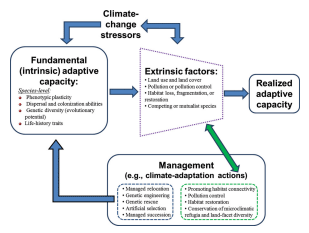
Next Steps
Adaptive capacity varies strongly among species, and therefore understanding and including it in climate change vulnerability assessments is essential for efficient allocation of finite management resources. The NPS is working to develop effective vulnerability analysis frameworks that consistently include adaptive capacity, and this paper reinforces the importance of doing so and provides case studies and a useful structure for understanding how management intervention can influence adaptive capacity.
More Information
This project is part of ongoing work of the National Park Service Climate Change Response Program and collaborators to support park adaptation to changing conditions.
Beever, E.A., John O’Leary, J., Mengelt, C., West, J., Julius, S., Green, N., Magness, D., Petes, L., Stein, B., Nicotra, A.B., Hellmann, J. Robertson, A.L., Babij, E., Brennan, J., Schuurman, G.W., and Hofmann, G.E. 2015. Improving Conservation Outcomes with a New Paradigm for Understanding Species’ Fundamental and Realized Adaptive Capacity. Conservation Letters DOI: 10.1111/conl.12190.
Last updated: August 6, 2021
